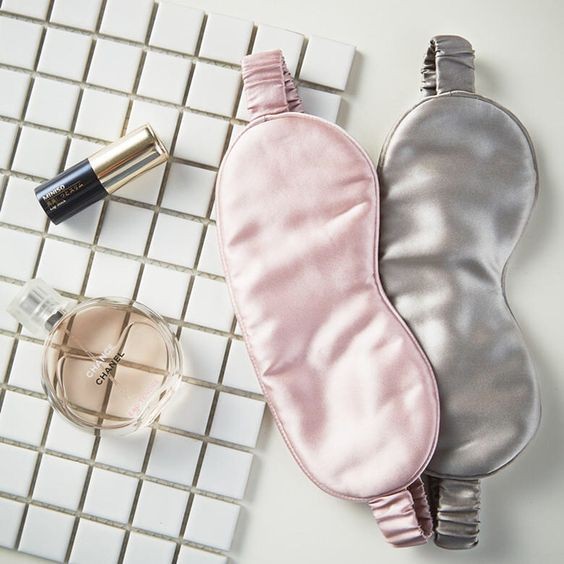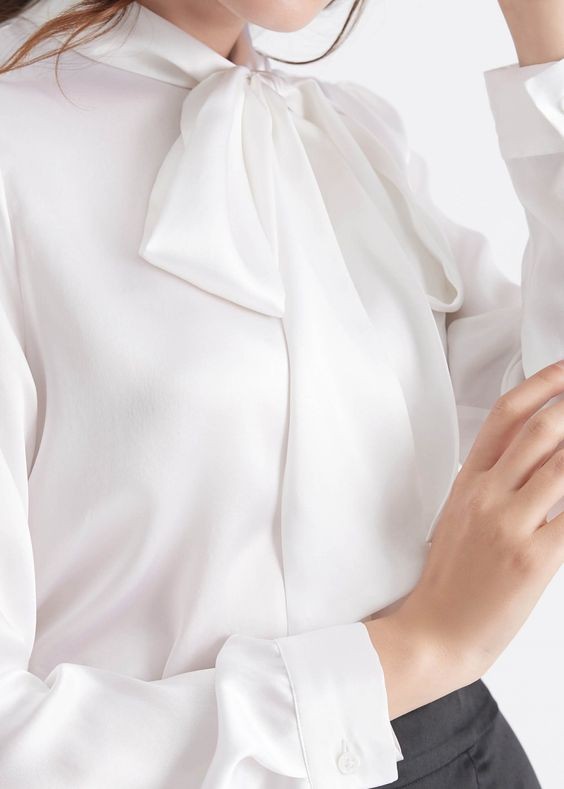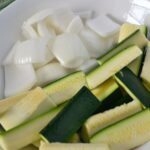What Is Silk Made Of? Silk, known for its smooth texture and shimmering appearance, is a natural protein fiber created by certain insect larvae to form cocoons. Discover the intricate composition of silk and explore the fascinating world of silk production, all explained simply and clearly on WHAT.EDU.VN. Understand silk’s properties, types, and sustainable aspects.
1. What Exactly is Silk?
Silk is a natural protein fiber secreted by insect larvae, mainly composed of fibroin. Bombyx mori larvae, which exclusively feed on mulberry leaves, are the primary source of most commercial silk, renowned for its strength, luster, and soft texture. At WHAT.EDU.VN, we simplify complex concepts, making learning accessible and enjoyable for everyone.
Silk has been a highly coveted material for millennia. Its unique shimmering effect comes from the triangular prism-like structure of the silk fibers, which refract light at different angles, creating a subtle rainbow effect. Silk production has played a significant role in shaping trade routes and cultural exchanges.
1.1. Key Properties of Silk
- Strength: Silk is one of the strongest natural textile fibers.
- Softness: Its smooth texture makes it comfortable to wear.
- Luster: The triangular prism-like structure of silk fibers reflects light, giving it a shimmering appearance.
- Elasticity: Silk has moderate elasticity, allowing it to return to its original shape after being stretched.
- Absorbency: Silk can absorb moisture, making it comfortable to wear in warm weather.
1.2. Historical Significance of Silk
Silk originated in ancient China, where it was initially reserved for the nobility. The secret of silk production was closely guarded for centuries, contributing to China’s economic and cultural influence. The Silk Road, a network of trade routes, facilitated the exchange of silk and other goods between the East and West.
Alt text: Luxurious Isabella silk sleep mask showcasing the soft texture and delicate sheen of silk.
2. How is Silk Made? The Silk Production Process Explained
The silk production process, known as sericulture, involves raising silkworms, harvesting cocoons, and extracting silk fibers. While modern techniques have been introduced, the fundamental steps remain consistent with ancient practices.
2.1. Silkworm Rearing
Bombyx mori silkworms are fed a diet of mulberry leaves to promote growth and silk production. The silkworms go through several molting stages before entering the pupal stage, during which they spin cocoons.
2.2. Cocoon Harvesting
Once the silkworms have spun their cocoons, the cocoons are harvested and sorted. The cocoons are typically steamed or boiled to kill the pupae inside and loosen the silk fibers. Some animal rights activists advocate for “peace silk” production methods that allow the silkworms to emerge from their cocoons before harvesting.
2.3. Silk Extraction
The silk fibers are carefully unwound from the cocoons in a process called reeling. A single cocoon can yield a continuous silk filament that is several hundred meters long. The filaments are combined and twisted together to form silk yarn.
2.4. Yarn Processing
The silk yarn is then processed to improve its strength, luster, and texture. This may involve degumming (removing sericin, a gummy protein), bleaching, dyeing, and finishing.
3. What are the Different Types of Silk Available?
Different types of silk are produced depending on the silkworm species and production methods. Each type of silk has its unique characteristics, making it suitable for various applications.
3.1. Mulberry Silk
Mulberry silk is the most common type of silk, accounting for the majority of global silk production. It is known for its fine texture, strength, and luster.
3.2. Eri Silk
Eri silk, also known as “peace silk,” is produced without killing the silkworms. It has a coarser texture and a matte appearance compared to mulberry silk.
3.3. Tasar Silk
Tasar silk is a wild silk produced by silkworms that feed on oak and other trees. It has a coarser texture and a natural golden color.
3.4. Muga Silk
Muga silk is a rare and valuable type of silk produced only in Assam, India. It has a natural golden luster and is known for its durability.
3.5. Spider Silk
Spider silk is an incredibly strong and elastic fiber produced by spiders. However, it is difficult to produce in large quantities, making it unsuitable for commercial textile production. It is used in specialized applications such as bulletproof vests and medical devices.
4. What Is Silk Used For? Diverse Applications of Silk
Silk is a versatile material with a wide range of applications in both consumer and industrial sectors. Its unique properties make it suitable for clothing, home furnishings, medical applications, and more.
4.1. Consumer Applications
- Apparel: Silk is used to make a variety of clothing items, including dresses, blouses, scarves, lingerie, and ties.
- Home Furnishings: Silk is used to make decorative pillows, curtains, bedding, and wall hangings.
- Accessories: Silk is used to make scarves, shawls, and handbags.
4.2. Industrial Applications
- Medical: Silk sutures are used in surgery due to their strength, flexibility, and biocompatibility.
- Parachutes: Silk was historically used in parachute production due to its lightweight and strength.
- Tires: Silk fibers were used in the production of bicycle tires to increase their strength and durability.
Alt text: Elegant bow-tie neck silk blouse demonstrating the luxurious drape and smooth texture of silk.
5. Where is Silk Fabric Produced? Global Silk Production Hubs
China is the world’s largest silk producer, followed by India. Other countries that produce silk include Uzbekistan, Thailand, Brazil, and Vietnam.
5.1. China
China accounts for over 80% of global silk production. The country has a long history of silk production, dating back thousands of years.
5.2. India
India is the second-largest silk producer in the world. The country produces a variety of silk types, including mulberry, tasar, eri, and muga silk.
5.3. Uzbekistan
Uzbekistan is a significant silk producer in Central Asia. The country’s silk industry is supported by government initiatives and investments.
5.4. Thailand
Thailand is known for its high-quality silk fabrics, often featuring intricate patterns and vibrant colors.
6. How Much Does Silk Cost? Factors Influencing Silk Prices
Silk fabric is generally more expensive than other natural fibers due to the labor-intensive production process. The price of silk varies depending on the type of silk, quality, and origin.
6.1. Factors Affecting Silk Prices
- Type of Silk: Rare and high-quality silk types, such as muga silk, command higher prices.
- Quality: The quality of silk is determined by factors such as fiber length, strength, and luster.
- Origin: Silk produced in countries with higher labor costs may be more expensive.
- Demand: The price of silk can fluctuate depending on market demand.
6.2. Price Ranges
The price of raw silk typically ranges from $50 to $55 per kilogram. The price of silk fabrics can vary widely depending on the factors mentioned above.
7. Is Silk Sustainable? Environmental Impact of Silk Production
Silk is a natural fiber that is biodegradable and renewable. However, silk production can have environmental impacts, particularly related to water and energy consumption, as well as the use of pesticides and fertilizers in mulberry cultivation.
7.1. Environmental Concerns
- Water Consumption: Silk production requires significant amounts of water for mulberry cultivation and silk processing.
- Energy Consumption: Energy is used in various stages of silk production, including silkworm rearing, cocoon harvesting, and silk processing.
- Pesticides and Fertilizers: The use of pesticides and fertilizers in mulberry cultivation can have negative environmental impacts.
- Animal Welfare: Concerns have been raised about the ethical treatment of silkworms in conventional silk production.
7.2. Sustainable Practices
- Organic Mulberry Cultivation: Growing mulberry trees without the use of pesticides and fertilizers can reduce the environmental impact of silk production.
- Water Conservation: Implementing water-efficient irrigation techniques can minimize water consumption.
- Energy Efficiency: Using renewable energy sources and energy-efficient technologies can reduce the carbon footprint of silk production.
- Peace Silk Production: Producing eri silk without killing the silkworms is a more ethical and sustainable alternative.
Alt text: Stylish retro silk blouse showcasing the vibrant colors and smooth drape possible with silk fabrics.
8. What Certifications are Available for Silk?
Several certifications are available to ensure the quality and sustainability of silk products. These certifications provide consumers with assurance that the silk has been produced according to certain standards.
8.1. Silk Mark
Silk Mark is a certification mark for silk products in India, ensuring the purity and quality of the silk.
8.2. Global Organic Textile Standard (GOTS)
GOTS is an international certification standard for organic textiles, including silk. It covers the entire supply chain, from raw materials to finished products.
8.3. Oeko-Tex Standard 100
Oeko-Tex Standard 100 is a certification system for textile products, ensuring that they are free from harmful substances.
8.4. USDA Organic
The USDA Organic certification is available for silk produced using organic farming practices in the United States.
9. FAQ: Frequently Asked Questions About Silk
To further clarify the intricacies of silk, here are some frequently asked questions, answered concisely and accurately, providing valuable insights for those curious about this luxurious material.
| Question | Answer |
|---|---|
| What is the best type of silk? | Mulberry silk is often considered the best due to its fine texture, strength, and luster. |
| How can I tell if silk is real? | Real silk has a natural sheen and a soft, smooth texture. It also has a distinctive smell when burned, similar to burning hair. |
| How do I care for silk garments? | Silk garments should be hand-washed or dry-cleaned. Avoid using harsh detergents or bleach. |
| Is silk hypoallergenic? | Silk is generally considered hypoallergenic due to its smooth fibers, which are less likely to irritate the skin. |
| Can silk be dyed? | Yes, silk can be dyed easily, allowing for a wide range of colors and patterns. |
| Is silk warm in winter and cool in summer? | Silk has good insulation properties, making it warm in winter and breathable in summer. |
| What is the difference between silk and satin? | Silk is a natural fiber, while satin is a weave that can be made from various fibers, including silk, polyester, and nylon. |
| Is silk biodegradable? | Yes, silk is a biodegradable fiber, meaning it will decompose naturally over time. |
| What are the benefits of wearing silk? | Silk is soft, comfortable, breathable, and hypoallergenic. It also has a luxurious appearance and drapes well. |
| Where can I buy high-quality silk fabrics? | High-quality silk fabrics can be purchased from reputable fabric stores, online retailers, and specialty boutiques. |
| How does peace silk production differ from traditional methods? | Peace silk, or Eri silk, allows the silkworms to complete their life cycle and emerge from the cocoon before the silk is harvested, contrasting with traditional methods where silkworms are killed inside the cocoon. |
| Are there any innovative uses for silk in technology? | Spider silk, though not widely used in textiles, inspires innovations in materials science due to its exceptional strength and elasticity, finding applications in bulletproof vests, medical sutures, and even lightweight cables. |
| What are the major challenges facing the silk industry today? | Challenges include competition from synthetic fibers, environmental concerns related to water and energy consumption, ethical issues in silkworm rearing, and the need for sustainable production practices. |
| How does the price of silk compare to other luxury fabrics like cashmere or linen? | Silk is generally more expensive than linen but can be comparable to or slightly less expensive than high-quality cashmere, depending on the grade and processing of each material. |
| What is the role of sericin in silk production, and how is it managed? | Sericin is a protein that coats silk fibers and acts as a glue. It’s often removed through a process called degumming to improve the silk’s luster and softness but can also be retained or used in cosmetic and biomedical applications for its beneficial properties. |



10. Conclusion: Embrace the Elegance and Versatility of Silk
Silk, with its rich history, unique properties, and diverse applications, continues to be a highly valued material in the modern world. Understanding what silk is made of and how it is produced allows consumers to make informed choices and appreciate the craftsmanship and artistry involved in creating this luxurious fabric. At WHAT.EDU.VN, we strive to empower you with knowledge, fostering curiosity and lifelong learning.
Do you have more questions about silk, or anything else? Don’t hesitate! At WHAT.EDU.VN, we are dedicated to providing free, reliable answers to all your questions. Our community of experts is ready to help you explore any topic, big or small. Visit us today at WHAT.EDU.VN and ask away!
Contact Information:
- Address: 888 Question City Plaza, Seattle, WA 98101, United States
- WhatsApp: +1 (206) 555-7890
- Website: what.edu.vn
Let us help you find the answers you seek!

